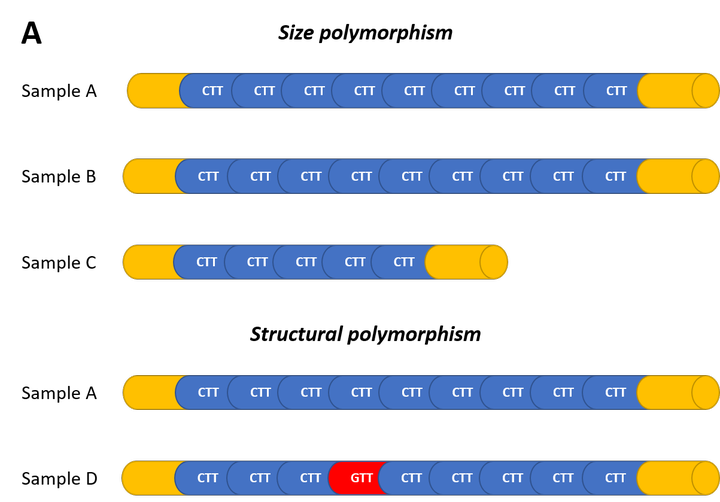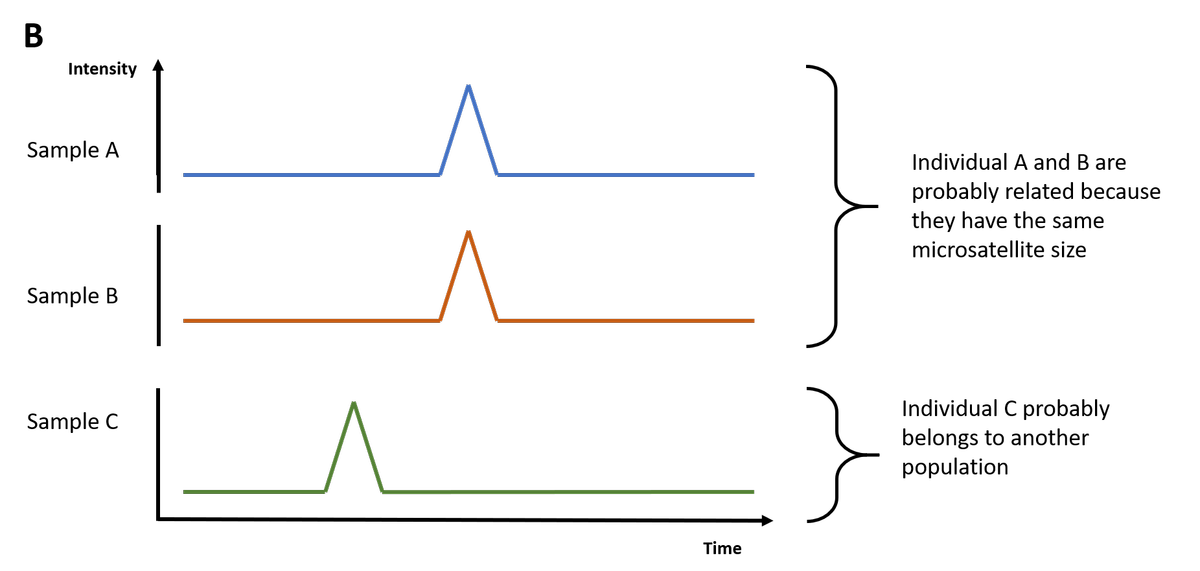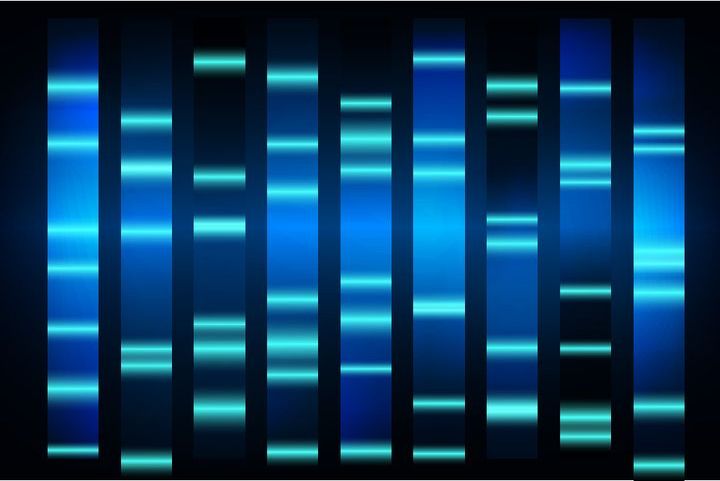In biology, DNA microsatellites are used as markers to build an individual's genetic map. They also make it possible to determine the degree of similarity between individuals or between populations, with a certain level of confidence depending on the number of microsatellites studied.
Microsatellites are made up of patterns composed of short DNA sequences (sequences of 1 to 6 base pairs, for example CA) repeated in tandem. These DNA sequences are very abundant in the eukaryotic genome (up to a thousand copies for some microsatellites).
Microsatellite transmission follows Mendel's laws of heredity as with any gene, but variations can occur from one generation to the next. These variations concern either the number of repetitions of the motif ( typically 5 to 1000 times, we speak of size polymorphism) and/or the sequence of the repeated motif (we speak of structural polymorphism for example: CTTCTTCTTCTTCTTCTTCTTCTT versus CTTCTTCTTCTTCTTCTT).
Microsatellites are therefore unique markers for the identification of an individual.
Used to establish relationships between individuals or the degree of similarity between several populations, the analysis will be performed for greater reliability on a combination of microsatellites.
Size polymorphism analysis is generally performed by PCR at targeted microsatellites. Sanger sequencing will be used to identify, in addition to size variations, structural variations of target microsatellites. High throughput sequencing makes it possible to overcome the limitations imposed by Sanger sequencing in terms of size and number of target microsatellites. The latter approach allows the possibility of analyzing a large number of individuals simultaneously and extending exploration to the entire genome.



Figure A : The different types of microsatellite polymorphism.
Figure B : Analysis of size polymorphism by capillary electrophoresis. Once amplified by PCR using a labelled primer, the microsatellites of the 3 individuals A, B and C are separated by capillary electrophoresis and their electrophoresis profile are compared.
The electrophoretic profile obtained for individuals A and B is identical, this suggests a strong relationship between the two individuals. The profile displayed for the individual C is different. C is probably genetically distant from individuals A and B and would therefore come from another population

Biomnigene can advise you on the choice of microsatellites to analyse as well as on the method of analysis of these sequences.



